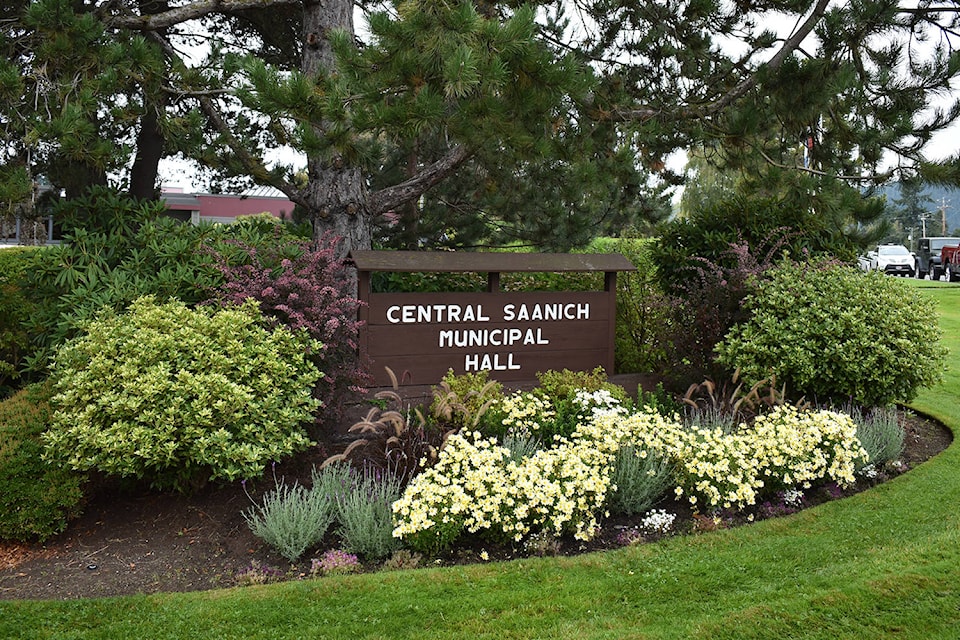A Central Saanich councillor welcomes efforts to adopt new climate change targets in warning against the cost of non-action.
“We only have 10 years to meet our new interim target of 45 [per cent] reductions in [community greenhouse gas emissions] and it will take a lot of brainpower to come up with ideas, so I’m not wasting any time,” says Coun. Zeb King, after Monday’s council meeting. Central Saanich had previously aimed to reduce GHGs 35 per cent by 2030 based on 2007 levels.
Central Saanich looked at revising its goals after a motion to that effect and declaring a climate emergency in July 2019. The new goal itself responds to new scientific findings from the United Nations Intergovernmental Panel on Climate Change (IPCC). Published in late 2018, the report urged tougher measures. Specifically, it said global net GHG emissions will need to decline by 45 per cent from 2010 levels by 2030.
A report prepared for council says aligning Central Saanich’s targets with the IPCC report would be “a major step towards climate action” in the wake of the municipality’s climate emergency declaration.
So how does Central Saanich aim to reduce GHGs by an additional 10 per cent? The report outlines two areas of priority: transportation and buildings.
RELATED: Climate change chosen as Canadian Press News Story of the Year for 2019
RELATED: UN report on global warming carries life-or-death warning
The number of electric vehicles (EV) on the road in the District would have to jump to 4,800 by 2030 from the current figure of 112 as of March 31, 2019, according to the report, which also outlines several steps to increase the number of EVs on the road. They include measures to enhance the private and public charging infrastructure. The new target figure means that 25 per cent of all vehicles in Central Saanich would have to be electric by 2030.
The goals are equally ambitious when it comes to the municipality’s buildings. According to the report, buildings account for 35 per cent of community-wide emissions. If Central Saanich wants to reach the new targets, 35 per cent of homes and businesses need to switch to zero emission heating systems and reduce their energy use by 50 per cent by 2030. This figure means that 140 homes and three per cent of commercial floor would need to be renovated annually, according to the report, which also outlines a number of measures towards that goal.
RELATED: Central Saanich accused of not following Climate Emergency declaration with urgent action
RELATED: Central Saanich mayor wants to electrify vehicle fleet
Whether residents will follow the municipality remains up in the air.
King acknowledges that the municipality has limited means to directly achieve these goals. “It’s hard to compel people to buy EVs,” he said. This said, staff are are already working on a comprehensive report on EV-ready requirements, said King, adding that he would like to see a select committee of experts to brainstorm ways to increase transportation electrification.
King acknowledged that the goals are ambitious. But if they are also difficult to reach, they are also necessary, King suggested.
“Science doesn’t really care if you don’t like it,” he said. “We have to realize that it is not necessarily easy, but not doing it doesn’t make it easier. We also have to realize that there is a cost for not taking action.”
The report before council also includes two notable statistics concerning carbon neutrality. If Central Saanich wanted to achieve carbon neutrality by 2030, it would have to plant 3.4 million trees to offset the entirety of its community GHG emissions estimated at 75,000 tons. Alternatively, it could pay $1.88 million per year as an offset.
Ultimately, the report casts doubt on the municipality’s goal to reach carbon neutrality by 2030, while noting that the new goals will put Central Saanich on the path towards carbon neutrality by 2050.
Council approved the accelerated goals unanimously with Couns. Niall Paltiel and Chris Graham absent.
Previous debates on climate changes have not always been free of acrimony and King said he hopes the unanimous support signals enthusiasm and support for the new goals.
Like us on Facebook and follow @wolfgang_depner
wolfgang.depner@peninsulanewsreview.com



